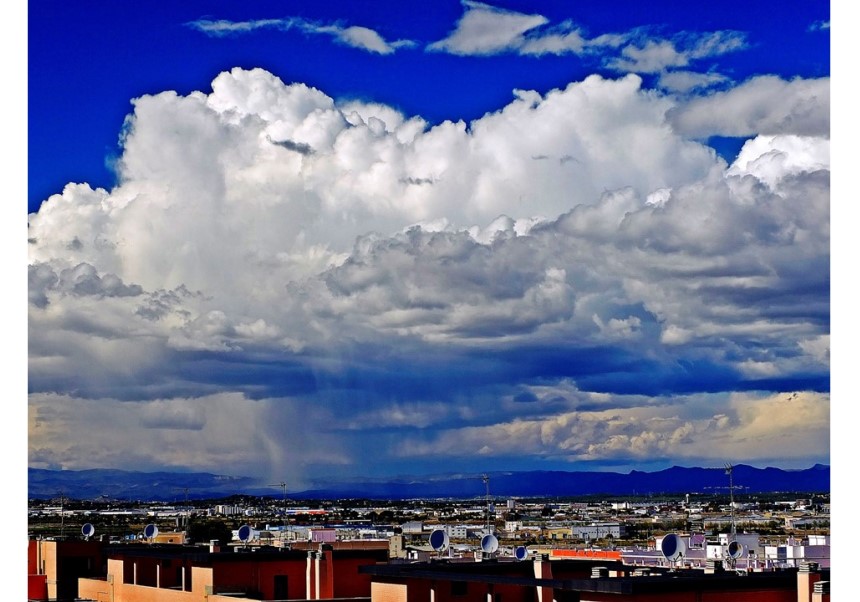
The ‘Downburst MXO’ application is the first system for monitoring extreme winds similar to tornadoes associated with storms, known as ‘downbursts’.
The system has been developed by the Desertification Research Centre (CSIC-UV-GVA) with data from AVAMET's network of weather stations in the Valencian Community.
The Climatoc-Lab research team of the Desertification Research Centre (CIDE), a joint centre of the Spanish National Research Council (CSIC), the University of Valencia (UV) and the Generalitat Valenciana, has developed a tool that allows real-time monitoring of extreme winds associated with storms, known as downbursts, in the Valencian Community. The application, called Downburst MXO, allows real-time detection of these phenomena thanks to the network of more than 700 weather stations with real-time data from the Valencian Meteorological Association (AVAMET).
Extreme winds associated with storms represent a severe meteorological phenomenon, as they can reach intensities similar to those of a tornado and, therefore, pose a risk due to the direct impact on communities and infrastructures. In the current climate change scenario, the DOWNBURST project, funded by the PROMETEO programme of excellence of the Generalitat Valenciana and led by the Climatoc-Lab and the Interdisciplinary Thematic Platform for Climate and Climate Services (PTI+ Clima) of the CSIC, investigates the potential effects of global warming on the risk of extreme winds associated with storms in the Valencian Mediterranean region, with a focus on improving their detection, attribution and prediction.
According to César Azorín, CSIC scientist leading the Climatoc-Lab and the DOWNBURST project, ‘preliminary results suggest that global warming could be increasing the frequency and severity of downbursts due to changes in thermodynamics. The phenomenon of downbursts is very difficult to predict and puts at risk aviation safety or the spread of forest fires, among others. Therefore, this first real time downburst monitoring service can be very useful to improve the surveillance of the phenomenon and its immediate impacts,’ he says.
Phenomenon on a local scale
This web application can be accessed free of charge through the AVAMET, Climatoc-Lab and DOWNBURST project websites. The system is based on an algorithm that constantly reads ten-minute data from all AVAMET stations, and automatically identifies whether a blowout is occurring based on sudden changes in reference variables such as strong winds accompanied by changes in temperature, humidity, precipitation or atmospheric pressure.
Where the criteria are met, the Downburst MXO web application indicates the location with a symbol representing the burst. In addition, the system notifies the owner of the station so that they can check the veracity of the event and can even provide other data such as damage to the area (falling trees, electricity pylons, walls, etc.), including photographs and videos. Each of the events recorded are in turn verified by the DOWNBURST project's research team, and become part of a database of bursts.
The Downburst MXO application was presented at an event held at the CSIC's Casa de la Ciència in Valencia organised by the CIDE's Climatoc-Lab, PTI+ Clima and AVAMET (https://youtu.be/lBzfPLbyfOI). There, the importance of meteorological observation provided by citizen science was highlighted, with AVAMET as a unique example of collaboration with the CSIC for the generation of knowledge and services. ‘The availability of a dense network such as AVAMET's is fundamental for the observation of a phenomenon that sometimes occurs on very local scales, affecting areas of less than 4 kilometres’, Azorín points out.
The system is already operational and plans to be updated periodically with improvements in its operation and information, such as the classification of blowout events by typology (dry, wet, warm, etc.) or the automation on demand of alerts for public and private entities interested in its use for different purposes. The CSIC and AVAMET have jointly developed this system within the framework of a General Action Protocol (PGA) signed in June 2023, aimed at promoting the use of data provided by citizen science in the generation of knowledge and climate services.
CIDE Communication









